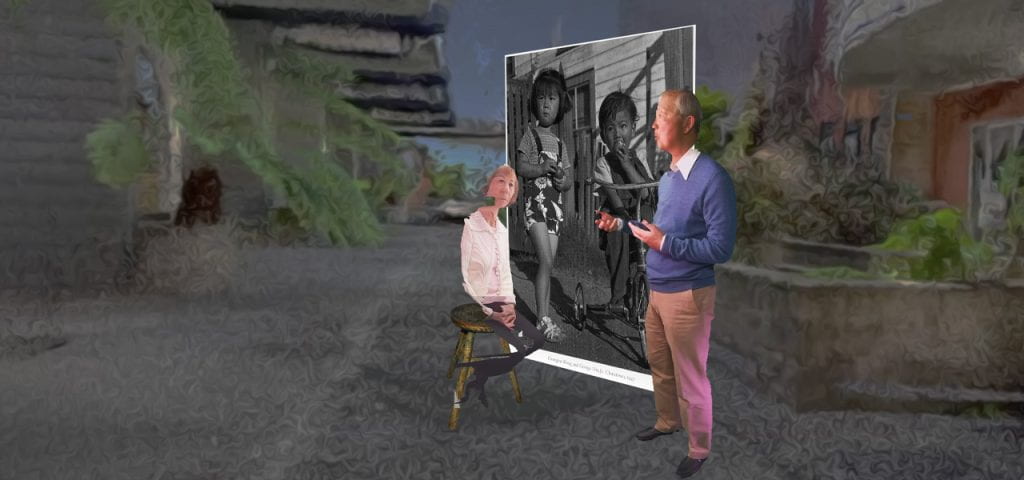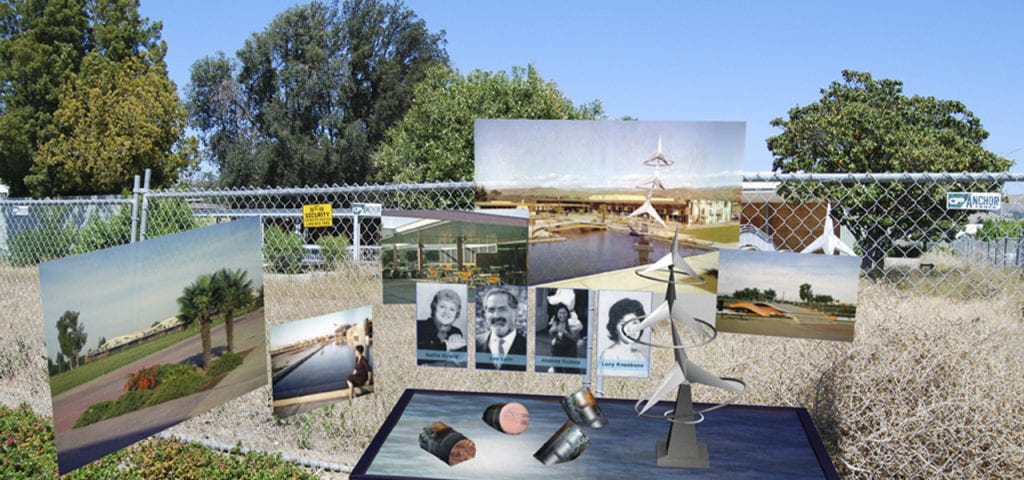Histories, Places and Technologies: Locative Creative Non-Fiction Storytelling
With the advent of new immersive interactive digital media technologies new opportunities are available to artists and technologies for creative expression and storytelling. Portable technologies have allowed historical nonfiction stories to be told and experienced in the places where they unfolded. This panel of artists, creators, institutions and technologists explore the field of cutting edge immersive creative nonfiction storytelling. Already popular for gaming, technologies like AR, VR & XR offer possible creative nonfiction storytelling and meaning-making methods that can extend, subvert, or transform gamers’ sense of immersion. Immersive media raise questions of representation, embodiment, truth, place, aesthetics, and activism. This group of filmmakers, curators, documentarians, educators, technologists and multimedia artists meet to discuss possible integrations of extended reality technologies into their documentary, storytelling, and exhibition practices.


Panel discussion and participants:
Elliot Anderson– a digital media artist, media curator and Associate Professor of Art in the Art Department & Environmental Art and Social Practice MFA program at UC Santa Cruz. Anderson is co-director of the UCSC Social Practice Arts Research Center (SPARC). He is a member of the Berkeley Art Center (BAC) Programming/Curatorial Board where in 2018 he curated the exhibition Queer Technology In 2010, Anderson created one of the first “feature-length” Augmented Reality Locative documentaries, Silicon Monuments, which uses a custom augmented reality app on hand-held devices to create a site-specific, multimedia documentary about a former IBM plant and now a polluted Superfund Site in South San Jose CA. His current work Leather Memoir Leather Memoiris a site-based Augmented Reality documentary in Ringold Alley South of Market (SoMa) neighborhood in San Francisco. The work tells the history of the LGBTQ and Leather community at places where this history unfolded.
Justin Hoover – the Executive Director at the Chinese Historical Society of America. He has deep roots in the Bay Area visual arts and API community bringing his critical experience in museum and cultural center administration as well as international curatorial practice. He has been the Curator of Exhibitions at the Santa Cruz Museum of Art (MAH) and Creative Director at Fort Mason Center. Hoover holds a Master’s Degree in Public Administration of International Management from the Middlebury Institute of International Studies, and a Master’s Degree in Fine Art from the San Francisco Art Institute.
Kimberly Szeto – the Programs Coordinator at the Chinese Historical Society of America. She’s currently developing an Augmented Reality Bruce Lee walking tour in SF’s Chinatown paired with the museum’s newly opened Bruce Lee exhibit. Szeto holds a B.S. in Technology and Information Management and a B.A. in History from UCSC.
Mark Hellar – is the Technical Community and Content Manager for Adobe Aero. He has also taught a course on XR (Covering AR and VR) at the Academy of Art University since 2019. Additionally, he has taught XR technologies at the San Francisco Art Institute and the Gray Area Art and Technology Center. Mark has lectured on the subject at the Smithsonian Institution, Solomon R. Guggenheim Museum, and the Tate Modern. In this presentation, Mark Hellar will discuss working on the AR project. You Be My Ally this work with the Adobe Aero AR application, and discuss experiences teaching with current XR technologies.
Alexander Porter – is an Emmy-award winning immersive director, documentarian and educator. He is recognized for defining the discipline of Volumetric Filmmaking through immersive productions, and creating virtual and augmented reality creativity tools. Alexander is an inventor and designer behind the first and most widely used software for volumetric video production. His most recent feature documentary is Truth or Consequences (Rotterdam, 2020), a ‘speculative documentary’ film about the world’s first spaceport and the town nearby, that comprises a feature film, a local film festival and a bespoke virtual cinematography tool. Currently, Alexander is making Topography, a multimedia documentary project exploring the layered perspectives defining America’s public lands, using technologies including photogrammetry, game engines, and augmented reality.
Susana Ruiz – Assistant Professor of film and digital media at the University of California, Santa Cruz. Her work is collaborative, interdisciplinary, and takes the hybrid form of intertwined theory and practice. Her work circulates internationally and is regularly featured and cited in both academic and non-academic contexts. Her interests include immersive media and performance; value-centric and participatory design; games and documentary approaches to game development; real-world games for social activism; and the creative application of theories of social justice such as anti-oppression, narrative power analysis, and ethical spectacle. She holds a Ph.D. from the University of Southern California (USC) Media Arts + Practice program and an MFA from USC’s Interactive Media and Games program.
Huy Truong – Huy Truong is an Emmy Award-nominated director of photography, media artist, and creative producer with extensive experience in feature films, television series, documentaries, and mixed reality production. Truong’s research interests include emergent aesthetics and technologies of cinematography and new approaches to storytelling that include Virtual Reality, Augmented Reality, and participatory co-creation. Truong has worked on multiple award-winning shows, including director of photography of the documentary feature GRAB (Sundance Official Selection), directed by renowned Indigenous filmmaker Billy Luther; director of photography of the Emmy nominated BECOMING CHAZ (Sundance Official Selection). Truong is a war refugee from Việt Nam whose family moved to Queens in the 70s.